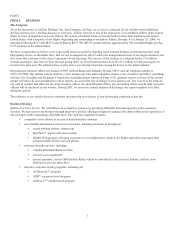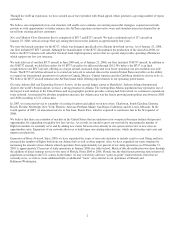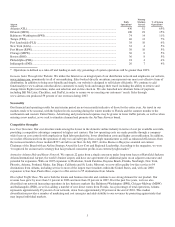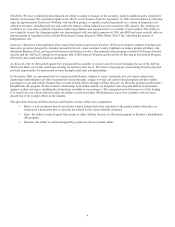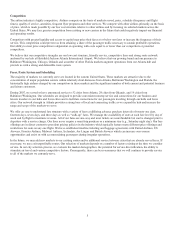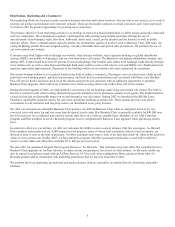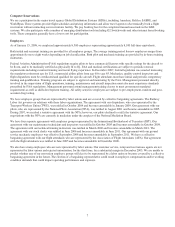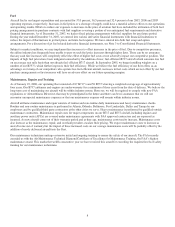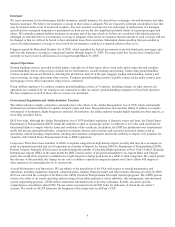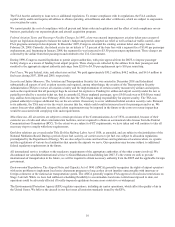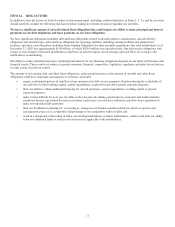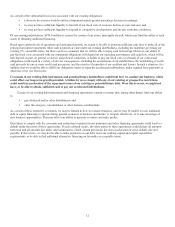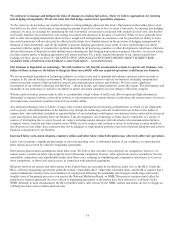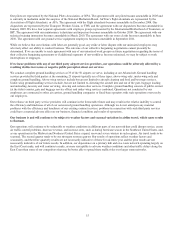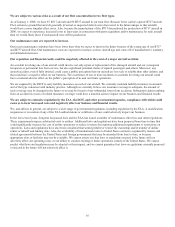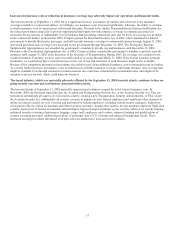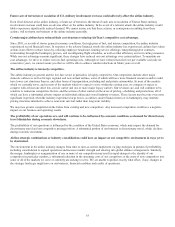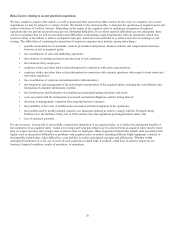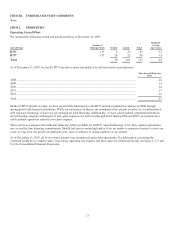Airtran 2007 Annual Report Download - page 17
Download and view the complete annual report
Please find page 17 of the 2007 Airtran annual report below. You can navigate through the pages in the report by either clicking on the pages listed below, or by using the keyword search tool below to find specific information within the annual report.
11
ITEM 1A. RISK FACTORS
In addition to the risk factors set forth elsewhere in this annual report, including, without limitation, in Items 1, 7, 7a, and 9a, investors
should carefully consider the following risk factors before making investment decisions regarding our securities.
We have a significant amount of aircraft related fixed obligations that could impair our ability to make principal and interest
payments on our debt obligations and lease payments on our lease obligations.
We have significant obligations including debt and lease obligations related to aircraft purchase commitments, aircraft delivery
obligations and aircraft leases, debt and lease obligations for operating facilities, including existing facilities and planned new
facilities, and other cash obligations including future funding obligations for other potential acquisitions. Our total indebtedness as of
December 31, 2007 was approximately $1.06 billion, of which $919.9 million was aircraft related. Our debt service obligations with
respect to our existing or increased indebtedness could have an adverse impact on our earnings and cash flows for as long as the
indebtedness is outstanding.
Our ability to make scheduled payments of principal and interest for our financing obligations depends on our future performance and
financial results. These results are subject to general economic, financial, competitive, legislative, regulatory and other factors that are,
to some extent, beyond our control.
The amount of our existing debt, and other fixed obligations, and potential increases in the amount of our debt and other fixed
obligations could have important consequences to investors and could:
• require a substantial portion of cash flows from operations for debt service payments, thereby reducing the availability of
our cash flow to fund working capital, capital expenditures, acquisitions and other general corporate purposes;
• limit our ability to obtain additional financing for aircraft purchases, capital expenditures, working capital or general
corporate purposes;
• make it more difficult for us to pay our debts as they become due during general adverse economic and market industry
conditions because any related decrease in revenues could cause us to not have sufficient cash flows from operations to
make our scheduled debt payments;
• limit our flexibility in planning for, or reacting to, changes in our business and the industry in which we operate and,
consequently, place us at a competitive disadvantage to our competitors with less debt; and
• result in a downgrade in the rating of either our existing indebtedness or future indebtedness, which could limit our ability
to borrow additional funds or increase the interest rates applicable to the indebtedness.


